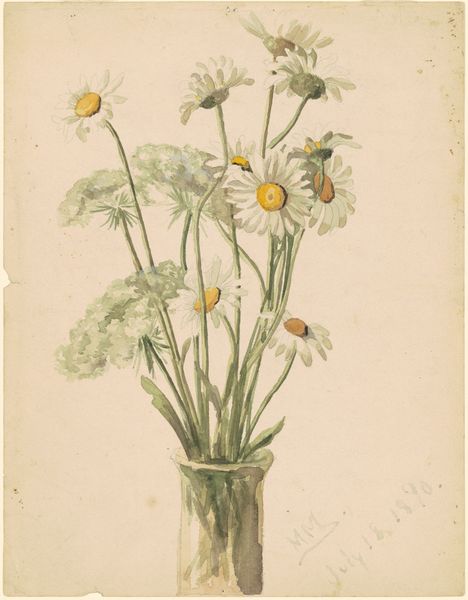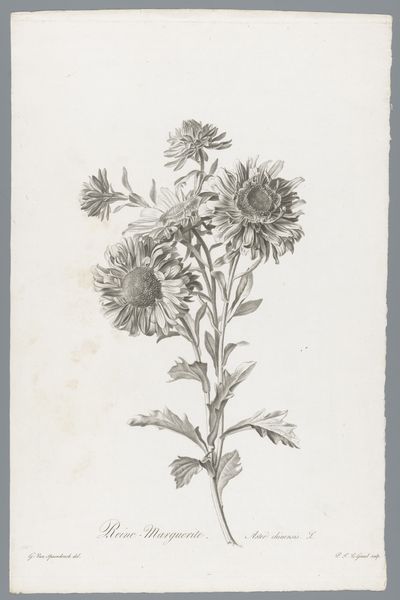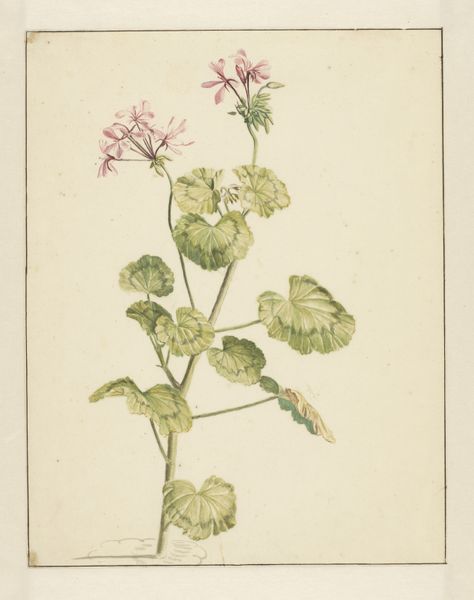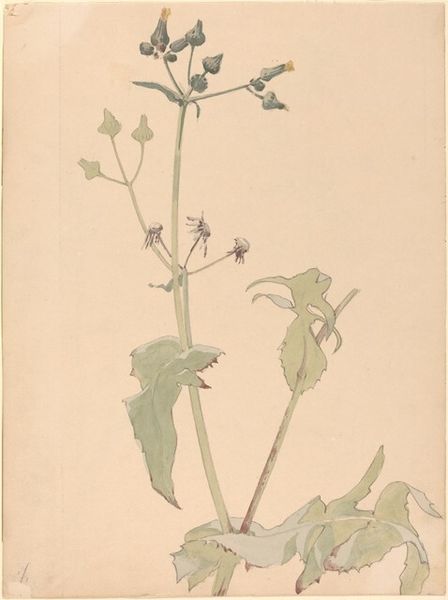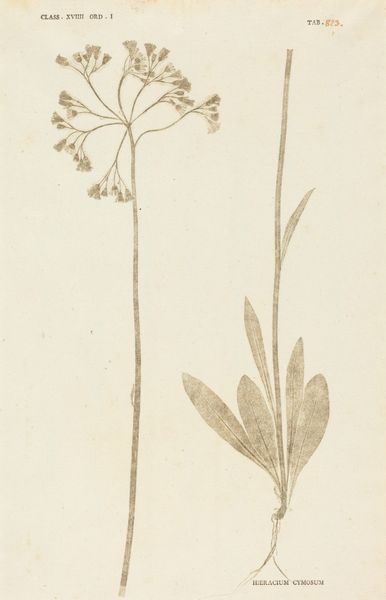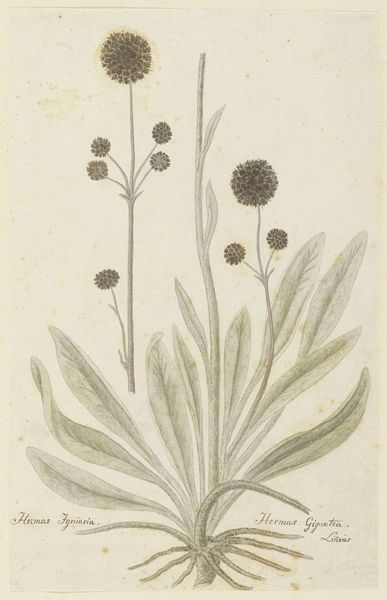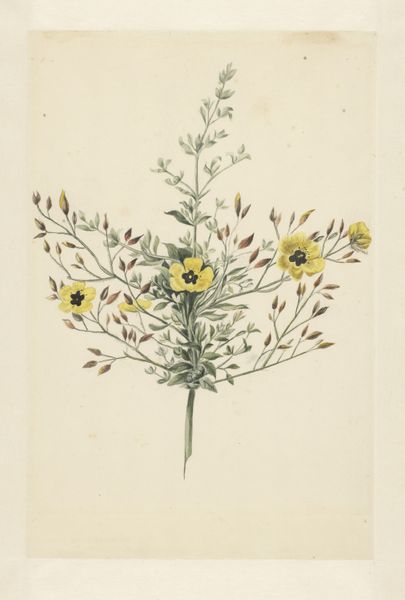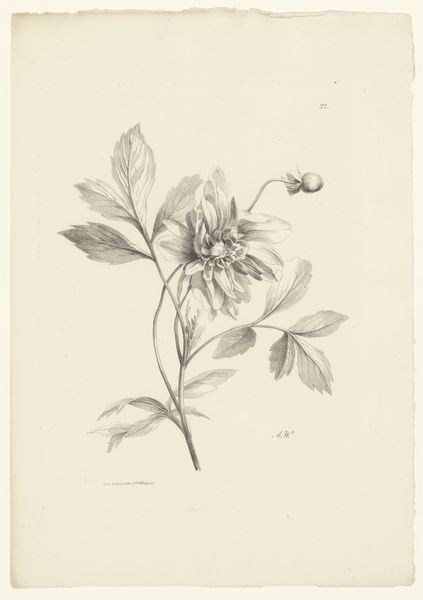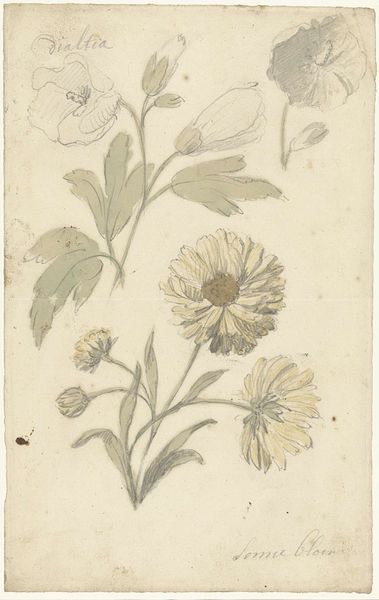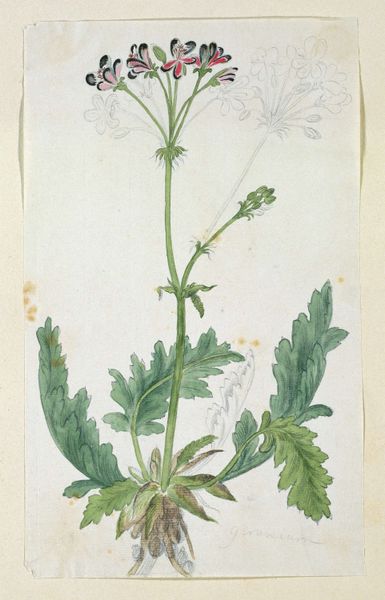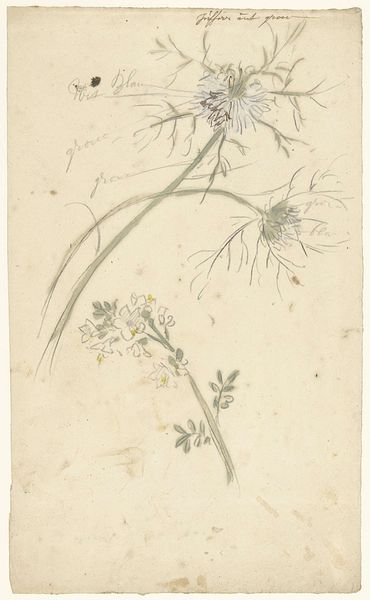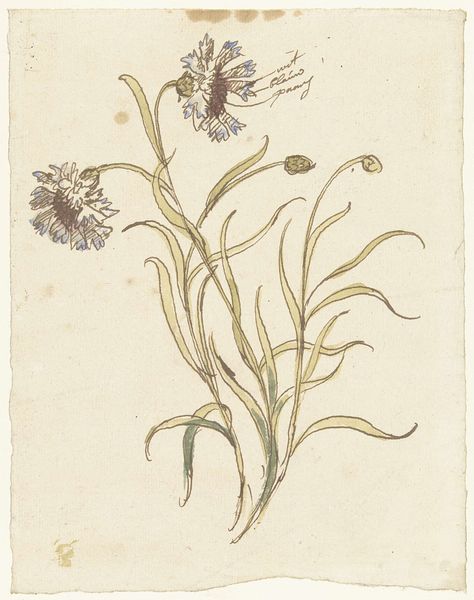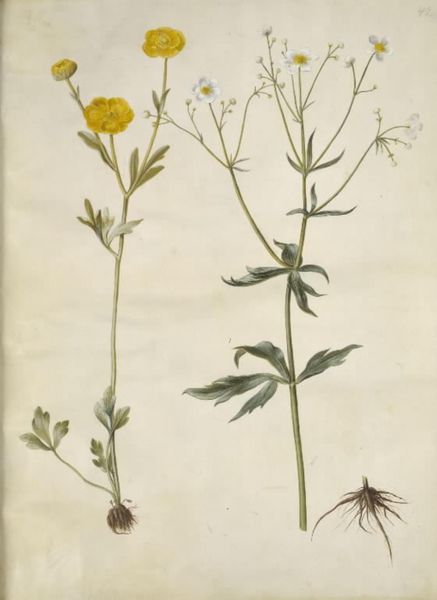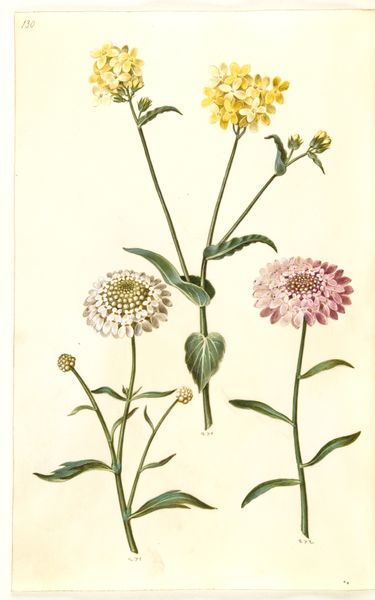
Dimensions: height 353 mm, width 226 mm
Copyright: Rijks Museum: Open Domain
Editor: This lovely rendering is called "Witte chrysant" - or "White Chrysanthemum," by Julie de Graag, and likely made somewhere between 1887 and 1924. It’s done with pencil, ink, and watercolor on paper. I am immediately drawn to its delicate quality and soft palette. What strikes you most about this drawing? Curator: I'm captivated by the layers of meaning a seemingly simple botanical drawing can hold. Chrysanthemums, especially white ones, often symbolize grief or mourning in many Western cultures. But in Japan, for example, they’re a symbol of longevity and rejuvenation, strongly tied to the Imperial family. Does de Graag, perhaps, invite us to consider this dualism? Editor: That's fascinating! I hadn't considered the cultural symbolism. So, are you saying the same flower can mean different things to different people? Curator: Absolutely. The image travels, and with it, its interpretations morph. What was de Graag, as a Dutch artist working at the turn of the century, trying to convey using this flower, and for whom? Is it a personal memento mori, or something more universal? Consider also the artistic choices - the delicate lines, the almost ghostly washes of color. Does that impact its feeling? Editor: It definitely adds to the melancholic, ethereal quality. Thinking about it now, it seems like de Graag wasn’t just drawing a flower, but capturing a feeling. Curator: Exactly. And feelings, memories – they are intrinsically linked to symbols and their journey through time. What we project onto this "Witte chrysant" says just as much about us as it does about the artist or the flower itself. Editor: It makes you wonder about all the layers hidden beneath what seems like a simple picture. Thanks for opening my eyes to that!
Comments
No comments
Be the first to comment and join the conversation on the ultimate creative platform.
